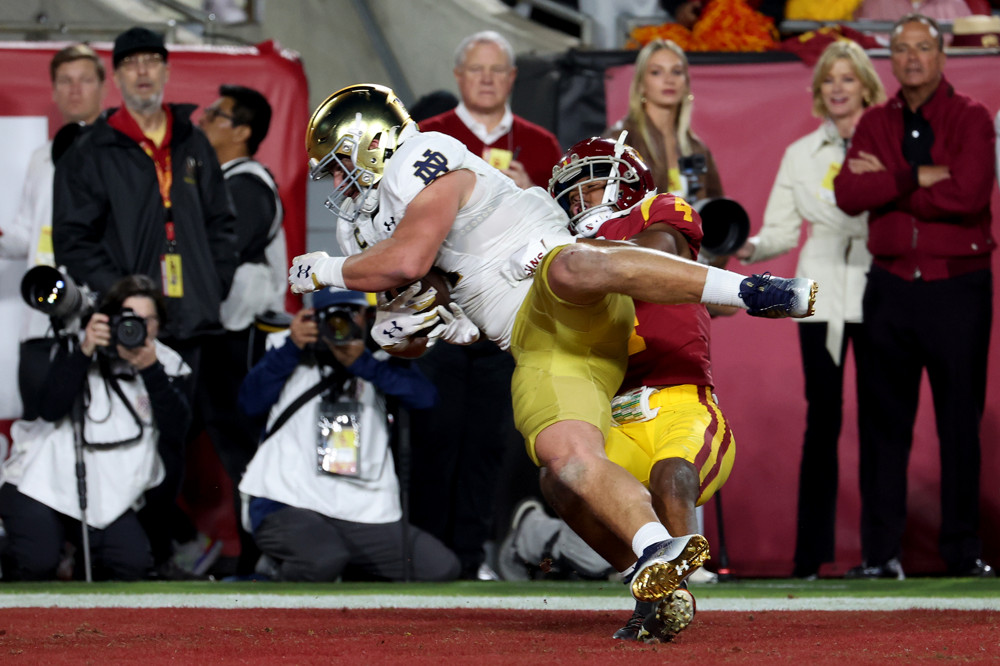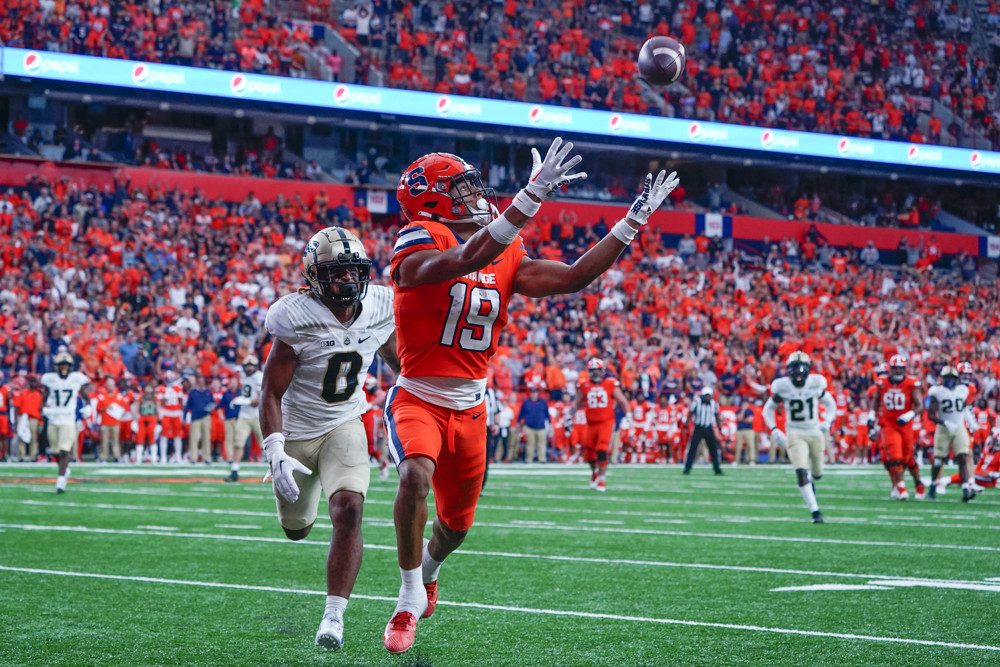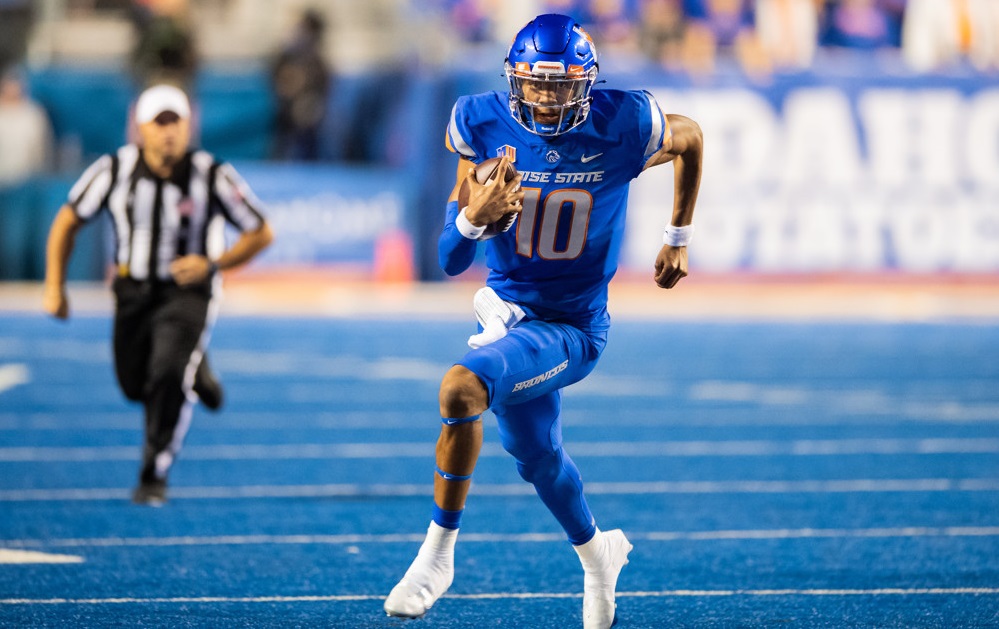Heading into Statesboro last Saturday, James Madison won its first five games as members of the FBS, allowing only 15 points per game this season. Using Expected Points Added per Attempt (EPA/A) the defense ranked 1st in stopping the run and 16th in stopping the pass. Facing a rebuilding Georgia Southern coming off a loss to rival Georgia State, the Dukes had reason to feel confident about beating the Eagles.
But the defense allowed 45 points in Madison’s first loss of the season. The Dukes underperformed, but that sells Georgia Southern short. The Eagles clearly had a plan to utilize the offense’s strengths to exploit the defense’s weaknesses.
James Madison bases out of a 4-2-5, playing with four down linemen and five defensive backs over 83% of the time going into this game. The overhang safeties excel at forcing the run inside, with the Dukes ranked 1st in EPA/A on outside runs (-.49). On the inside, Jalen Green and James Carpenter rank in the top 10 of Total Points Per Play among all defensive tackles with 5 or more tackles.
In the secondary, Madison flips its personnel, positioning its cornerbacks and safeties to the field and boundary, rather than left and right or strong and weak. Against the pass, the Dukes play single-high coverage on over 74% of non-screen passes. They perform better in Cover 3 than Cover 1, scoring -.46 EPA/A in Cover 3 versus -.09 in Cover 1.
As for Georgia Southern, it passes nearly 60% of the time, ranking 70th in the FBS at 0.13 Total Points Per Play. The run does worse, clocking in at 0.04 Total Points Per Play. Georgia Southern prefers to use a tight end, doing so on almost 65% of snaps, and unsurprisingly runs better with a tight end and passes better without one (0.06 vs 0.01 Total Points Per Play on Runs, 0.07 vs 0.16 Total Points Per Play on Passes).
For this matchup, Georgia Southern adjusted both its packages and run/pass mix. 68% of its plays came from 10 personnel, and in total the Eagles passed 80% of the time. With an extra receiver on the field, the Eagles could focus on airing the ball out, avoiding the mismatch between their mediocre running attack and Madison’s elite run defense.
While the Eagles did not refuse to run the ball, they mostly did so to keep the Dukes honest. To get the secondary out of position, Georgia Southern came out several times in trips to the field. In response, Madison would rotate its defensive backs to the field, to which the Eagles would run into the boundary. Twice the offense ran a sweep around a boundary tight end away from trips.
Their other runs fared no better, as the Eagles ended the day with only 12 yards on 16 attempts.
The run failed the offense, but the jet sweep did not, netting 44 yards for the Eagles. Not only did the quick pass confound the defense, but the constraint from the jet motion did as well. Georgia Southern ran its first jet sweep with 7:03 left in the third quarter, breaking outside for 33 yards. Under five minutes later, the Eagles used the same motion, to which the Dukes overpursued. Instead of pitching to the man in motion, the Eagles fake the jet and throw to Jalen White in the opposite flat, resulting in a 37-yard touchdown. In the fourth quarter, Georgia Southern goes back to the same motion against a wary defense and gains 11 yards off the sweep.
The motioning did not stop here. Twice in the third quarter the Eagles gashed the Dukes deep on motion plays. The first forced James Madison to play one high safety against the crossing concept. The second expanded the secondary previously aligned to a tight set, exposing the seams.
Three times Georgia Southern motioned a man into trips to the field, looking to hit him for a quick pass outside. The Dukes once brought the safety down to the motion man, giving away their coverage, and twice played it straight, leaving too few defenders to cover the flat. Despite breaking the coverage shell, the first solution forced an incompletion, while the second forfeited six yards on each attempt.
Despite the motions and formations presented to the Madison defense, it hardly adjusted its coverage calls. The Dukes resorted more to their strengths than normal, playing 25% more Cover 3 this game than in its previous five games. Even when Georgia Southern went away from trips, the Dukes still went Cover 3 on 11 out of 19 pass snaps.
Even facing Madison’s best coverage, the Eagles found ways to move the ball. Regardless of whether Madison rolled their Cover 3 toward or away from trips, Georgia Southern could break Madison’s coverage. When rolling to, Kyle Vantrease hit Amare Jones on his bender in front of the high safety for a 29-yard gain. When rolling away, Vantrease hit Jeremy Singleton on an out route for 19 yards. The Dukes’ reliance on Cover 3 did not pay off, as the defense allowed 5.6 EPA in this coverage.
But Georgia Southern’s greatest advantage came from putting its receivers in positions to succeed against Madison’s weaker defenders. The Eagles targeted the boundary cornerback 11 times, completing 8 of those passes for 190 yards and two touchdowns. From motioning away, to running man-beater concepts, to isolating him by aligning trips to the field, Georgia Southern attained the mismatches it desired.
Prior to Week 7, James Madison looked to have a top-10 defense. Georgia Southern, on the other hand, appeared to have a middling offense. But by exploiting the Dukes’ defensive flaws, both with scheme and personnel, the Eagles piled on the points and pulled off the upset.



